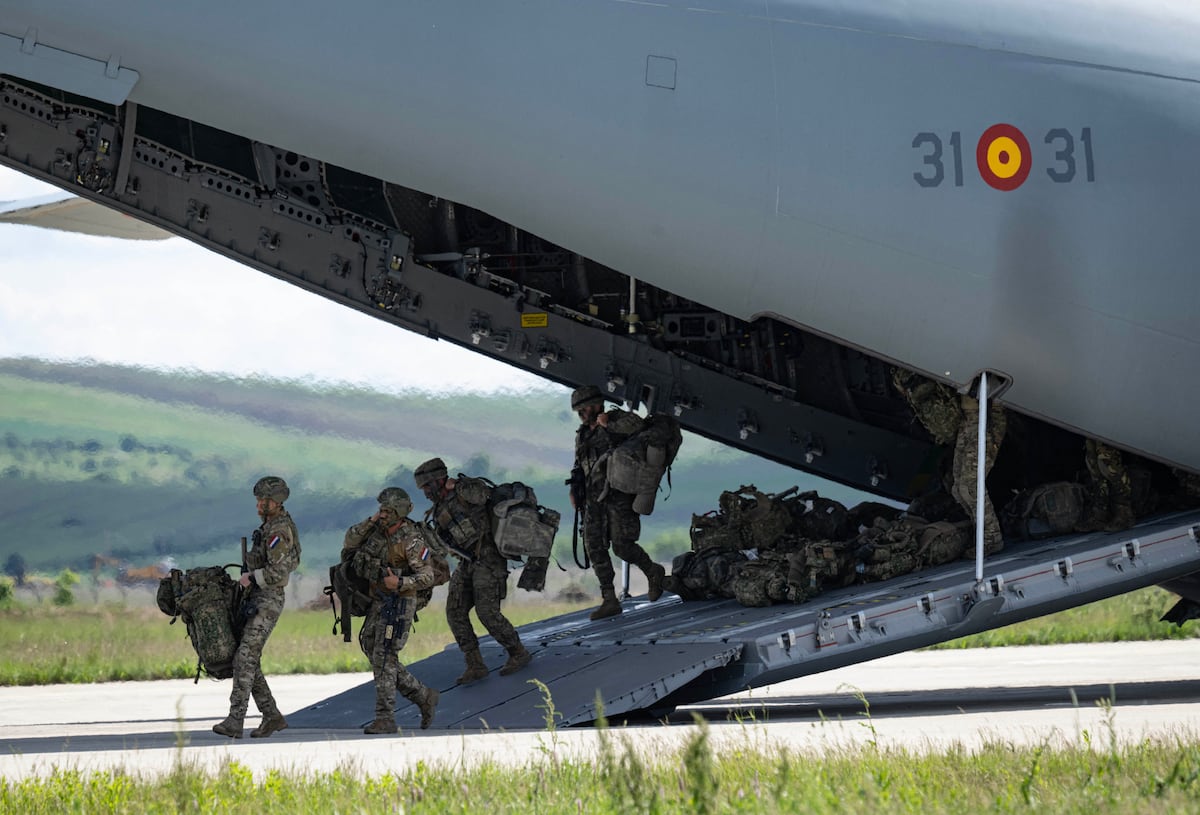ROME — If the European Union wants to compete with the United States in the global defense market it must appoint a dedicated defense industry commissioner, push joint procurement by member states and curb anti-trust rulings to promote industry consolidation, a new report has claimed.
The recommendations were part of a long to-do list included in the report on boosting EU competitiveness issued by former European Central Bank governor Mario Draghi which will be closely read by officials in Brussels.
The section on Europe’s defense sector urges member states to jointly procure weapons, thus encouraging the continent’s firms to team up to build them, creating essential integration on both the supply and demand side.
For years, the opposite has been true, as member states hand orders to their local industries, thus ensuring the continent has 12 main battle tank programs compared to one in the United States.
RELATED
“Insufficient aggregation and coordination of public spending in Europe compounds industrial fragmentation,” the report states.
Noting that European states have supplied ten different howitzer types to Ukraine, the report claims the land sector is the least integrated, followed by the naval industry.
Relative integration in the aircraft industry in Europe has produced success stories like the A-330 Multi-Role Tanker Transport aircraft, the report said.
With a turnover of €135 billion in 2022 and a workforce of half a million, the defense industry has its strong points, the report adds, claiming it beats the U.S. in sectors including main battle tanks, conventional submarines, naval shipyard technology, helicopters and transport aircraft.
But Europe’s defense spending, at $313 billion, is around a third of the $916 billion spent by the U.S. in 2023, it added.
“If all EU member states who are members of NATO who have not yet reached the 2% target would do so in 2024, this would translate into approximately an additional €60 billion ($66 billion) in defense spending,” the report stated.
As nations looked to their own procurement needs, only 18% of total EU spending was on collaborative programs in 2022, well below the bloc’s target of 35%, the report said.
At the same time, insufficient integration was occurring between cross-border firms, compared to the U.S., where the number of “main players” has shrunk from 51 in 1990 to five.
One reason firms were not merging in Europe was tough anti-trust legislation, the report said, claiming, “EU competition enforcement may prevent or discourage businesses from merging and scaling up, particularly those creating market power.”
In a list of recommendations to member states, the report urged them to “scale back existing industrial capacities, where needed,” in order to avoid “full mirroring and duplication of capabilities.”
RELATED

It also urged a “commonly agreed specialization strategy among companies from participating member states reallocating capacities and reinforcing respective domains of excellence.”
To achieve that, the EU needed a new ”Defence Industry Commissioner, with the appropriate structure and funding to define, coordinate and implement an EU defense industrial policy fit for today’s new geopolitical context,” the report said.
Another task for a commissioner would be boosting research-and-development spending in the sector. Europe now spends just €10.7 billion a year, around 4.5% of total defense spending, compared to the United States, which spends a mammoth $140 billion, around 16% of all spending.
“The bulk of investment takes place at the member state level,” the report stated. “But several new or technically complex segments – such as drones, hypersonic missiles, directed-energy weapons, defense artificial intelligence and seabed and space warfare – call for pan-European coordination. No member state can effectively finance, develop, produce and sustain all the necessary capabilities and infrastructure that are required to maintain leadership in these technologies.”
One consequence of limited European investment in new technology was a continued preference by local buyers for U.S. kit. “Of a total of €75 billion spent by member states between June 2022 and June 2023, 78% of procurement spending was diverted to purchases from suppliers located outside the EU, out of which 63% based in the U.S.,” the report said, adding that U.S. Foreign Military Sales in Europe increased by 89% between 2021 and 2022.
“At the same time, the U.S. market remains closed for European companies,” it added.
European states liked the “administrative simplicity and better visibility of what is available,” thanks to the Foreign Military Sales program, and had “poor knowledge … of what is the actual offer from the European defense industry.”
To rectify this, the report pushes for “a political commitment” or “reformed public-procurement legislation, which would indicate that EU solutions would need to be considered as first options,” by European buyers.
If U.S. products were purchased by multiple EU states, they should cooperate to “achieve better terms and, where needed, European specifications of U.S. defense products, including local production and support, freedom of action rights, customization” and intellectual property rights, the report said.
Tom Kington is the Italy correspondent for Defense News.
Read the full article here








Leave a Reply